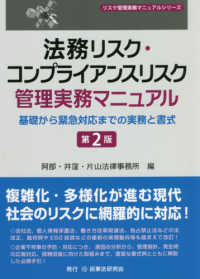- ホーム
- > 洋書
- > 英文書
- > Computer / Languages
Full Description
much on their perceptions of C as an important language, which it certainly is, and on C programming experience as a highly marketable skill, as it is on the suitability of C for scientific computation.








